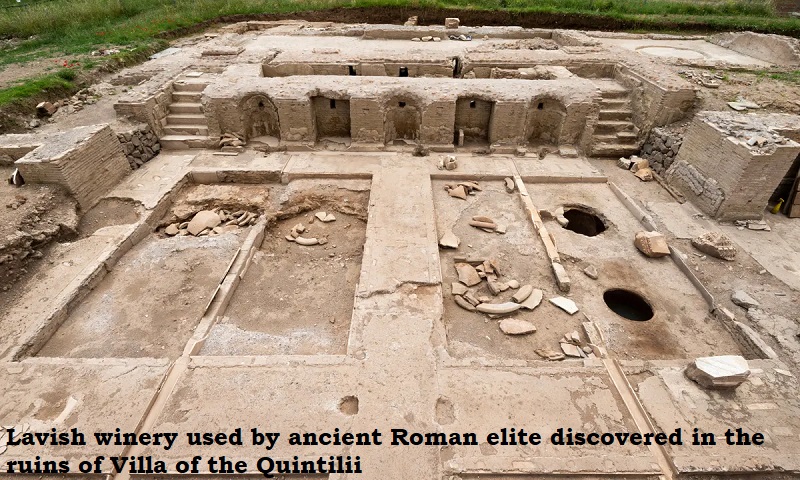
A recent study published in the academic journal Antiquity has revealed that the Roman elite gathered at the Villa of the Quintilii, south of Rome, during gladiator duels to witness winemaking. The villa, which was home to a theatre, an arena for chariot races, and a bath complex, also had a winery where the elite of ancient Rome gathered annually. This was a luxury winery with marble-lined areas for treading grapes and fountains of wine. The villa is the only known example in the Graeco-Roman world of a site built specifically for this purpose.
Archaeologist Dr Emlyn Dodd, who is also an expert on ancient wine production, stated that the villa was “an amazing mini city completed by a luxury winery for the emperor himself to indulge his Bacchic tendencies”. It is speculated that the villa was built by the Quintilii brothers, who served as consuls of Rome in 151AD and were killed by Emperor Commodus around 181AD. Once the imperial rulers took personal ownership of the complex, they expanded and modified it for centuries.
Wine and agriculture were of great importance to the nobility’s wealth and power at that time, as wine was a huge source of wealth for the Roman elite. They owned vast amounts of land dedicated to viniculture, winemaking, and they were selling it all across the Mediterranean. Wine was also used in religion, medicine, and daily life, and was the main beverage when water was not safe to drink.
The winery had a purpose-built facility complete with marble-lined areas for treading grapes and fountains of wine. The recently excavated areas revealed that men would tread grapes with their bare feet in a rectangular area measuring 37 feet by 14 feet. The crushed grapes would then be taken to the two mechanical presses, which stood nearby before the brightly-coloured liquid flowed into niches and created a fountain-like effect. The wine would flow along open channels into vast ceramic dolia or storage jars placed underground, which was a standard winemaking technique in ancient Rome.
There was only one dining room that had been excavated so far, and it was lavishly decorated with marble motifs possibly to allow guests to view each stage of the winemaking process through wide entrances that were set around three sides of the open courtyard. The study noted that the winery was more about the spectacle than the product being produced. The level of decoration, with these fountains of wine, really shows that. Marble was used in areas where grapes were treaded, despite it being slippery when wet, showing that the winery’s extravagant nature was prioritised over practical considerations.

Post Your Comments